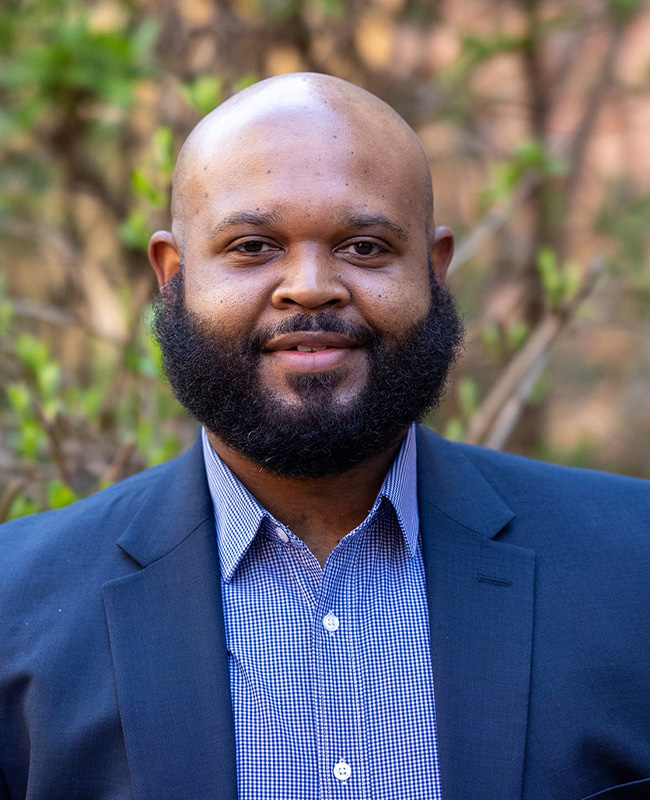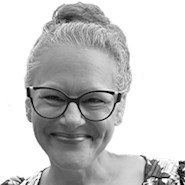Edited by Catherine A. Cardno, Ph.D.
 dit photo credit]
dit photo credit] Kevin Brown Jr., P.E., M.ASCE, is a construction manager in the Philadelphia headquarters of Urban Engineers Inc. In this role, he has served as a consultant during construction for clients such as the Pennsylvania Department of Transportation, the Pennsylvania Turnpike Commission, the Schuylkill River Development Corp., and the New York City Economic Development Corp. Brown has advice for how civil engineers’ mentoring of disadvantaged youth can help increase diversity within the profession.
1. In your experience what does a successful guided mentorship program look like?
I think that a successful mentorship program, such as one between employees and disadvantaged youth in the community, grows organically. Companies shouldn’t force mentorship roles on employees. Rather they should let them — if they feel comfortable — go out and do this type of mentorship and outreach. I think that creates a more natural, sustainable program.
The company should let employees know that it supports employee mentoring and provide opportunities and resources for that to happen, whether it is through an already-established organization, a specific event, or through a partnership with a local school.
After the mentorship has gotten underway, the company should solicit feedback from those employees who participated to learn how they were able — or not — to connect with individuals. From there, the company could then develop training or provide resources on better ways to connect and engage with younger people from underrepresented, disadvantaged groups.
I was in the ACE Mentor Program as a teenager, and that introduced me to architecture, construction, and engineering when I was in high school. That program was actually the reason I decided to go to college. It also helped me select my major. And then once I graduated and got a job, I became a mentor for that same program.
I’ve been mentoring in the program for probably 11 years, and I’ve been able to connect with students and see them through high school and college, and now a couple of them have graduated from college and actually work for Urban. So, while I didn’t create or develop that program, it’s been something that I’ve been part of and has been part of me for a very long time.
2. What have you found to be the most significant long-term benefits of mentorship?
I think for mentees and mentors one of the major benefits can be developing a long-term relationship that might evolve into a friendship. Mentoring doesn’t have to be a one-and-done kind of event.
It might sound cliche, but I do believe that mentors are making a difference and a positive change in society. We live in a world that is crazy, and I’ll always say that if everyone dedicated just an hour each year to mentoring someone or doing some positive outreach, I think the world would be a better place. And if those people in turn helped others down the line, then you’re slowly making changes in a number of people’s lives.
3. In your opinion, what does success look like for a company when it comes to diversity and inclusion?
You can’t dictate the outcome of mentoring youth, and I don’t think diversity within a firm can be forced. But I think success is simply having employees who are comfortable and passionate about being engaged in a community and reaching out to a diverse group of young people. And hopefully being able to connect with them and provide guidance. So, in theory, a company can be 100% white males, but if a high percentage of that company is out engaging and connecting with underrepresented and disadvantaged youth in the community, then I think that is a successful program.
When I was a kid in the ACE Mentor Program, it opened my eyes to a career choice that I had no idea existed. And the mentors communicated that option to me in a way that made sense to me. That is huge. I know a lot of times we as engineers go out and we do a presentation or sit down to talk to someone, and we speak in the everyday language that we’re used to. But sometimes that doesn’t connect or resonate with a younger person, and you may lose that student because they just can’t understand what you’re saying. But if you can translate that very slightly into language that they understand, the chances of connecting with them becomes greater. That was what I saw when I was a student. They spoke a language that made sense to me.
Sometimes we get so wrapped up in that instant gratification where, perhaps, a client wants to see a diverse group so we have to make this happen now, and we miss the fact that to have equality and diversity in the field, the outreach has to start earlier. You’re not going to see the full effects of that effort until years down the line.
4. How can the benefits of mentorship — for both mentor and mentee — best be harnessed to increase diversity and inclusion at firms?
If your mentorship efforts become more diverse and inclusive, ultimately that will lead to an industry that becomes more diverse and inclusive. And that is the benefit.
Focusing on diversity and inclusion should, in my opinion, also help you progress through a company. Having that as one of your fundamental guidelines as you decide how to tackle projects and interact with the community helps you become a better leader because it enables you to understand even before you begin a project that there is more to be considered than just the technical side. There are diverse ways of thinking and different groups of people that will be impacted by every project.
5. What would you recommend as the first steps to take when getting involved with or creating a mentorship program designed to aid diversity and inclusion?
Finding out who is already passionate about mentoring or diversity is the first place to start. I think those individuals will lead the effort, and it will be something where you will see natural positive results versus creating an environment where employees feel pressure from above to participate. Once you get that group of passionate people, it will create a vibe that attracts others to participate, and the program will grow.
I think jumping in with a program that already exists is probably the best way because the infrastructure is already there. It doesn’t have to be a full program either. For example, if a school wants to learn about what a structural engineer does or if they have a student who is interested in engineering but doesn’t know who to reach out to for more information, that’s a simple way of engaging with the community.
6. How can an existing program be expanded to enrich a company’s diversity and inclusion efforts?
I would say the same thing: Find someone who is passionate to lead that effort. But you also need to understand the purpose of why the expansion is necessary. Are you doing it for yourselves or are you doing it for a community? Once you understand that, I think that’s when you can attack it the best way.
7. Are there any lessons learned that you’d recommend companies keep an eye on as they begin or expand existing programs?
The one thing that I try and avoid is assuming that people can or cannot connect with a certain demographic because of how they look or where they come from. Once you are a mentor and connecting with someone, don’t forget that your mentee might not have had the same opportunities that you did.
So, for example, someone might say, “You’ve got to save money for college.” But their mentee might not have the ability to save money because they have to provide for their family. So instead of giving directional advice, spend a lot more time listening and learning about individuals and their background before you make an assumption or give advice because sometimes you can do more harm than good.
And it’s not easy, because you spend your whole life being raised a certain way, living a certain way, and assuming that everyone around you has similar experiences and opportunities. So just take a step back, listen, and learn before you dive in with advice and direction.
Catherine A. Cardno, Ph.D. is the managing editor of Civil Engineering Online.
This article is part of the “Equity and Infrastructure: How Infrastructure Influences Social Equity,” series that is being published by Civil Engineering magazine and the Civil Engineering Source. It first appeared in the November/December 2021 issue of Civil Engineering as "Mentorship Can Increase Diversity within Engineering."



